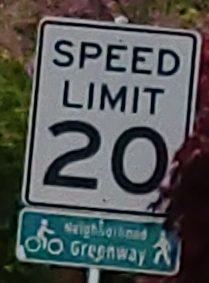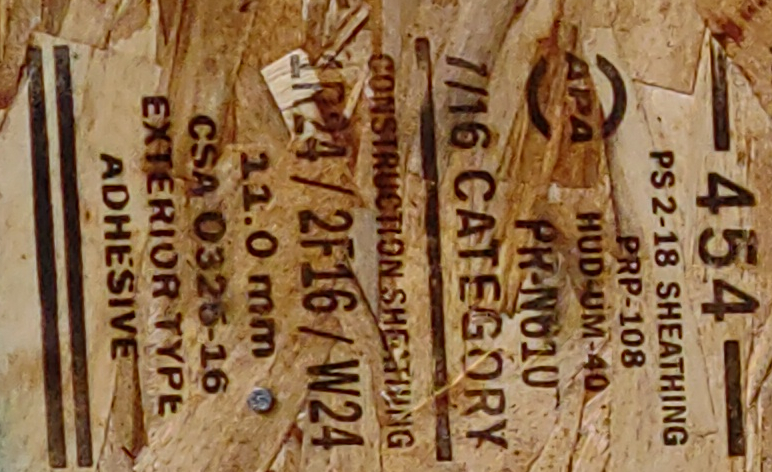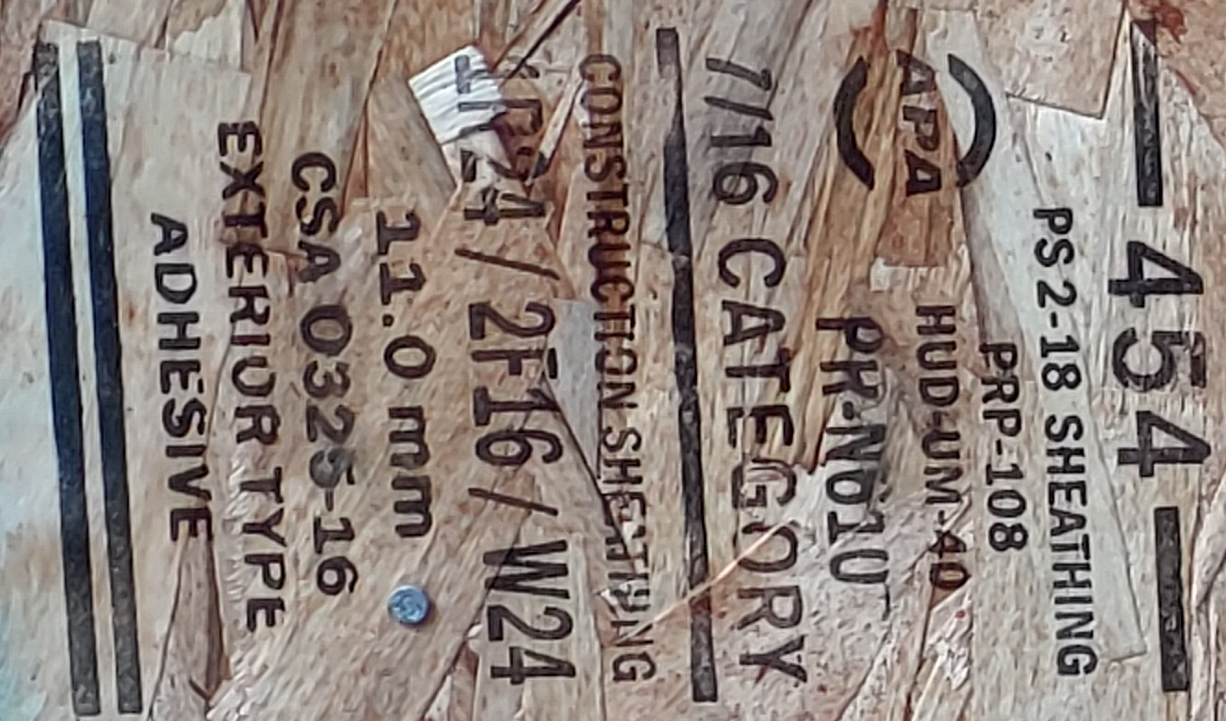“The Moto Edge Plus looks like the future.”
- Beautiful "Endless Edge" display
- Sleek, futuristic design
- Sharp 108MP camera
- Great performance
- Massive battery
- Thick and heavy
- 21:9 aspect ratio is awkward
- Mediocre front-facing and telephoto
Motorola’s new flagship phone, the Moto Edge Plus, looks like something out of the HBO series Westworld. The show depicts handheld devices as edgeless displays largely lacking identifying features aside from a sharp, bright screen. They’re not smartphones, really – just smart devices, a cross between tablet, phone, and PC.
The Moto Edge Plus feels like one giant step toward Westworld’s fiction. It’s nearly all screen and, thanks to a fast Qualcomm processor, 5G support, gobs of RAM, and a smooth 90Hz display, it reacts to your touch with unnatural speed. There’s a subtle Motorola logo on the back, but otherwise, it’s sleek and devoid of branding.
Despite its futuristic design, Motorola is also trying to undercut the competition. The Moto Edge Plus is “only” $1,000. That’s a lot, but also less than top-tier flagships from Apple and Samsung. This is a daring, bold phone.
Display
Motorola’s Moto Edge Plus has one obvious, massive headline feature that you’ll stare at every time you pick up the phone. That’s the 6.7-inch “Endless Edge” display.
Phones with sleek, curved-edge displays aren’t entirely new (believe it or not, the Samsung Galaxy Note Edge is five years old), but the Moto Edge Plus is part of a new generation that takes it to an extreme. The edges wrap around the sides a full 90 degrees, all but eliminating the side bezels when the phone is viewed straight-on.

Phones like the Huawei Mate 30 Pro embraced this design concept last year, but the Moto Edge Plus goes all-in. Perhaps more importantly, it’s widely available in the U.S. , while Huawei and Oppo phones are difficult to find and use in North America. It’s effectively a first for your average U.S. smartphone shopper.
The Endless Edge display is a beautiful OLED touchscreen with a long list of features including FHD+ resolution, 90Hz refresh rate, 10-bit color support, and HDR10+ certification. The uncommon and dramatic 21:9 aspect ratio results in a phone that feels tall and narrow. This is an advantage when texting, web browsing, or reading because it increases the content you can see without expanding the width of the phone.

However, it can be a problem when streaming video or games, as most are produced with a 16:9 aspect ratio in mind. A 21:9 display will show black bars on the sides when viewing 16:9 content, effectively reducing the usable screen space. Most video and some games will let you zoom in on the content to take up the entire display, but this cuts off a portion of the image.
The touchscreen can be difficult to use, as well. It looks alluring and futuristic, but makes the phone hard to handle without activating touch input when it’s not intended. This wasn’t an issue for me when browsing the web, but it became a problem when gaming. In Minecraft, I never found a grip that was comfortable and avoided accidental touch input.

There are two other quirks to the display. First, text often wraps down either side of the phone when viewing a website or document. Though it remains readable, it’s an odd look. The extreme curve also distorts color and brightness at the edges, due to the odd viewing angle. This is obvious when viewing any uniform swath of color across the display, such as the pure white background of many websites. I adjusted to it, but I’d certainly call it a flaw.
Your appetite for the Moto Edge Plus will, more than anything, come down to whether you fall in love with this screen. It’s a stunner, and it’s futuristic, but it’s not flawless. Phone geeks will happily adjust to the display’s quirks and enjoy the eye-catching look. If you’re more interested in function than form, however, consider a more traditional big-screen phone like the Galaxy S20 Plus.
Design
The Moto Edge Plus is a phone designed around its display. Its tall, narrow, blocky body is tailored to accommodate the tall, narrow 21:9 aspect ratio.
But wow, it’s a looker.
Want to know what the phone feels like? Pick up a Hershey’s chocolate bar. While I’ll admit I didn’t have a chocolate bar on hand for a side-by-side comparison, my mind immediately leapt to that comparison.
Despite rounded edges, the phone feels chunky compared to an Apple iPhone 11 Pro Max or Samsung Galaxy S20 Plus. Official figures put the phone’s girth at a bulky .37 inches. The iPhone 11 Pro Max is .32 inches thick, the Samsung Galaxy S20 Plus is .31 inches, and the OnePlus 8 Pro is .33 inches. This makes the phone harder to hold than its narrow profile would suggest.

It’s comically slippery. Even the slightest incline will allow the phone to slowly slip away. It spontaneously flung itself off the edge of my desk, my couch, and several chairs. It always feels ready to break free of your grasp.
The phone also feels top-heavy, as it’s tall, and you’ll naturally hold the phone near its bottom. My review unit weighed 7.2 ounces on my kitchen scale, which is more than a Galaxy S20 Plus but less than Apple’s iPhone 11 Pro Max. This is a big phone that, like its competition, can be awkward to hold in while bed or when reclining on a sofa.
But wow, it’s a looker. Moto’s entire 2020 product line is clearly built to offer luxury design at lower price points, and the Edge Plus succeeds. My review unit’s classy blue finish, combined with the phone’s narrow look, makes for an elegant, professional device. The Moto Edge Plus looks like it belongs in a boardroom or private jet.
Optical fingerprint reader
The Moto Edge Plus uses an optical fingerprint reader for secure login. It appears in the lower quarter of the phone and is easy to use.
It doesn’t avoid the flaws that have plaugued this technology, however. While fingerprint recognition typically worked, it often took a moment to recognize my fingerprint. That’s sluggish compared to the near-instant login more traditional systems can provide. The system also has a lot of trouble dealing with any water, lint, or dirt on your hands.
5G, wireless, and ports
The Moto Edge Plus supports both mmWave and sub-6Hz 5G networks and, according to Motorola, can hit network speeds of 4Gbps in ideal conditions. I couldn’t test this myself because 5G hasn’t been deployed to my area. Still, it’s good to see support for both 5G networks, as it should improve connectivity and unlock access to the fastest speeds possible. New Android flagships are offering this feature in 2020, while the iPhone still entirely lacks 5G support.
The phone is a Verizon exclusive. You’ll need to be a Verizon subscriber to use this phone, or be willing to switch to Verizon’s network.
You’ll also find support for Wi-Fi 6 and Bluetooth 5.1. I’d expect to see the latest wireless connection standards in a new flagship phone, but it’s good to see Motorola hasn’t skipped any features in an effort to maintain the $1,000 price point.
Wired connectivity includes USB 3.0 Type-C and a 3.5mm audio jack, both of which are on the phone’s lower lip.
Camera quality

The camera is the other headline feature on Moto’s Edge Plus. The triple-lens system has a 108-megapixel main shooter, a 16MP ultrawide lens, and an 8MP telephoto lens. It also includes optical image stabilization, video stabilization, and laser autofocus with a time-of-flight sensor.
Yep, 108MP. As with the Endless Edge display, the phone’s 108MP camera isn’t a unique feature, but it’s cutting-edge and somewhat unexpected on a $1,000 phone. If you’re in the United States, the Samsung Galaxy S20 Ultra is only commonly available phone with the feature. And it retails for $1,400.
That’s a lot of megapixels. But does in translate to an excellent camera?
Main camera quality
Though it has a 108MP sensor, the Moto Edge Plus has pixel binning on by default. This technique, which Moto calls Quad Pixel Technology, combines the light from four pixels into one. That reduces output to 27MP but increases the brightness, contrast, and color of the image — in theory, at least.
At first glance, the Moto Edge Plus makes a strong impression. The camera comes out swinging in outdoor shots with a vivid, saturated look that’s common among flagship phones. These shots will certainly catch your eye and look great on a wide variety of screens.
I do feel the Moto Edge Plus has issues with color, however. My close-up of a flower causes it to look almost fluorescent, while it was more tepid in real life. Colors can become so extreme that they crush detail, removing subtle patterns or blemishes that would otherwise be visible. It’s not bad for Instagram, but it’s sometimes far from reality.
Color skewed in the opposite direction when I snapped indoor shots with moderate to low lighting. While the shots looked sharp and bright, colors took a plunge. The camera seemed particularly befuddled by the yellow wall of my kitchen and often skewed toward a weak, dim pastel that’s not at all accurate.
Portrait mode does a solid job of enhancing the look of portrait photos, and it works reasonably well even in moderate lighting, though it shows more grainy than photos taken with a Samsung Galaxy S20 Plus or Apple’s iPhone 11 Pro Max. My curly hair is, as always, a stress-test for the mode, and Motorola’s camera certainly has trouble dealing with errant curls, but the slight halo that dances at the edges of my frizz is not unusual. Every portrait mode I’ve ever tried has struggled to cope with my locks.
The Moto Edge Plus is best when snapping photos at moderate distance under moderate to bright lighting. It can take stunning shots under these conditions, but the main camera is not as a versatile as I’d hoped.
108MP Ultra-res/Telephoto quality
While the 108MP sensor uses pixel binning by default, you have the option to turn that mode off and capture full 108MP photos. Do that, however, and you’ll run into a couple issues. Using the 108MP “Ultra-res” mode significantly increases photo-processing time. The photos themselves are massive, consuming several times more space than the default 27MP photos.
You’ll be disappointed if you expect an obvious increase in clarity. The 27MP photos output at 6,016 x 4,512 resolution – already well above 4K. The 108MP photos output at 12,032 x 9,024 resolution. That’s much higher, but you’d need a display with a resolution well above 4K to appreciate the difference.
Motorola isn’t ignorant to this problem, and is quick to point out the added versatility of a super-high-resolution photo. A super-high-resolution image can enhance digital zoom, since there’s more detail to work with in the first place, but the Moto Edge Plus also has an 8MP telephoto camera with 3x optical zoom.
I decided to compare them side-by-side by shooting photos of text at a distance, then cropping the shots to see which showed the most detail.
The results are intriguing.
Clearly, the telephoto lens delivers superior sharpness. That is not an insult to the Ultra-res mode, because the detail here is impressive. These tight crops include less than 1 percent of the over 108,576,768 total pixels in the 108MP photo. Still, the crop from the telephoto lens is more legible.
However, you’ll notice a marked difference in the look of each shot. Photos from Ultra-res mode are noticeably more colorful than those from the 8MP camera. This makes sense, as the 108MP main camera has an f/1.8 aperture, while the telephoto camera has an f/2.4 aperture and, as a result, captures less light.
Overall, these results lead me to think skilled smartphone photographers will find a lot to dig into. The Ultra-res mode and telephoto lens are each suited to different situations. On the other hand, less skilled photographers (like myself) will probably ignore the Ultra-res mode and use the telephoto lens when zoom is required.
Ultrawide and macro quality
A 16MP ultrawide camera provides a 117-degree field of view for more expansive shots, and it works well. The dramatic photos you’re likely to take with an ultrawide lens works well alongside the Moto Edge Plus’ tendency to oversaturate color.
Are the results realistic? Nah – but that’s not the point of an ultrawide smartphone camera. It’s a fun, versatile option that can deliver a sense of scope and grandeur not normally possible on a smartphone. I enjoyed using it, and the photos I snapped with are easily among the best I was able to shoot during my review.
The phone’s macro mode has a job to do, but that job is likely more specific than you’d expect. It can provide solid quality when very, very close to a subject. I’m talking a few inches away at most. Otherwise, I found the main camera could snap sharper, more colorful photos.
Front-facing camera
The Moto Edge Plus has a 25MP front-facing camera, which, like the main camera, has Quad Pixel technology. It puts out 6.2MP images by default.

My quarantine haircut doesn’t make me the best subject, but I think the camera is solid. Photos from it are vibrant, clear, and crisp. The photo shares the overly saturated look from other cameras, but I think that’s less of an issue for selfies. My skin tone certainly doesn’t “glow,” yet there’s a hint of warmth here.
You’ll need reasonable lighting to get the most from the camera, however. Even with pixel binning in effect, the front-facing camera can’t avoid a grainy look in even dim indoor lighting, never mind a truly dark environment. There’s no Night Mode, or anything similar, to improve quality in limited lighting.
Camera quality summary
The camera on the Moto Edge Plus throws many options at owners hoping that a few will stick. A few do. Outdoor shots look great on the main camera, which performs its best in good lighting with colorful scenery. It’s Instagram-friendly, sacrificing balance and realism for a vibrant, saturated look that’s striking on any display.
I like the 108MP camera. It’s not something most owners will use frequently, but it does increase the phone’s versatility. You can take shots with the 108MP Ultra-res mode, then crop them down later for best results.
It’s a great camera system, to be sure, but it doesn’t stand out. All modern flagship phones offer excellent image quality. The Moto Edge Plus can take spectacular photos, but it didn’t blow me away.
Video quality
The Moto Edge Plus brings the heat in video specifications. It can capture video up to 6K resolution, or 1080p video up to 60FPS (frames per second). Other features include optical image stabilization, video portrait mode, and a video snapshot feature that can pull 20MP still images from video while filming.
I have little experience shooting video on smartphones, so I’m not able to put the video quality to a serious test. Still, I found the video quality to be strong, with sharp details and vibrant color.
The phone’s performance held up well even when shooting 6K video. I saw no notable delay or processing time before or after shooting at 6K.
There’s also a slow-motion mode that captures up to 120FPS at FHD resolution, or 240FPS at HD resolution.
Audio
Stereo speakers tuned by Waves, a Grammy Award-winning audio technology company, give the Moto Edge Plus its voice. And, boy, does it really scream.
At full volume, the phone delivers a strong, balanced sound that can cope with a wide range of content, from bass-heavy tracks to the most hectic action movies. The phone doesn’t deliver the most bass, but it does provide a crisp experience that’s resistant to distortion. Dialogue or vocals remain distinguishable even next to the roar of a jet engine or a constant, deep bass beat.
Performance
A Qualcomm 865 processor powers the Moto Edge Plus. This is the current latest and greatest offering from Qualcomm, serving up eight cores. That’s paired with 12GB of RAM and 256GB of storage connected through the UFS 3.0 storage standard. Motorola won’t offer models with more storage, and SDcard expansion isn’t an option.
Because most Android phones rely on Qualcomm processors, the Moto Edge Plus won’t have a particular advantage over its competition. Still, this is a fast processor. Only Apple’s excellent A13 Bionic will defeat it.
- Geekbench 5 Single-Core: 910
- Geekbench 5 Multi-core: 3,297
- 3DMark Sling Shot: 9,415
I’ve remarked in past reviews that smartphone performance has reached the point where most phones are “good enough.” Still, you’ll feel a difference between a flagship like the Moto Edge Plus and any phone using a midrange Qualcomm 600-series processor.
The Moto Edge Plus flies through content, rarely hesitating even while scrolling through big lists of high-resolution images or video. It’s not flawless, but it’s close. Pair that with the 90Hz screen, which is more responsive than the 60Hz screens that used to dominate in flagship phones, and it makes for a pleasant experience.
The Moto Edge Plus flies through content.
I mentioned that Apple’s A13 Bionic is quicker, which you can see in benchmarks. The Apple’s iPhone SE, for instance, scores 1,324 in Geekbench single-core and 3,192 in Geekbench multi-core. That does mean Apple’s $400 phone is significantly quicker in terms of per-core processor performance than the Moto Edge Plus. The iPhone SE is also competitive in multi-core. But do you see that speed in real-world use?
I noticed it only when using the camera. If you snap many shots in succession, for example, I noticed current-generation iPhones can shoot multiple photos quickly and feel a little more responsive while doing so. I also notice a more responsive feel when multitasking applications (despite the gobs of RAM in the Moto Edge Plus).
Still, “good enough” remains in effect. Does a modern iPhone feel more responsive? Yes. Does it truly matter during 99% of use? No, it doesn’t.
Qualcomm’s 865 includes an integrated Adreno 650 GPU, and it can handle any game Android is going to throw at you. This is Qualcomm’s current top-tier component, after all; there is not a superior chip for an Android game developer to target. Games fly, running at high frame rates and excellent quality settings.
I don’t have an iPhone 11 Pro Max available for a direct comparison, but benchmark results from 3DMark lead me to think the iPhone 11 Pro Max and the Moto Edge Plus offer a roughly equivalent experience. And since many other Android flagships will have the same Qualcomm 865 part with the same Adreno GPU, you likely won’t see a major difference between them, either.
As I said earlier, I have some complaints about how the phone’s design can make games tough to play when relying on touchscreen controls, but I certainly can’t fault performance.
Battery life
A massive 5000mAh battery powers the Moto Edge Plus. Batteries of this size aren’t unusual in 2020, but this still gives the Edge Plus a capacity lead over most competitors. The OnePlus 8 Pro has a 4,510mAh battery, the Samsung Galaxy S20 Plus has a 4,500mAh battery, and the Apple iPhone 11 Pro Max has a 3,969mAh battery.
I expect most people will end the day with 30 to 50 percent of the battery remaining.
Motorola quotes battery life at two days, and this was true in my experience. You can stretch it to three days if you’re light on the phone or use it up in a single day if you go all-out on gaming. I expect most people will end the day with 30 to 50 percent of the battery remaining.
The phone supports an 18-watt fast charger, included in the box, or 15 watts of wireless charging. It also supports wireless power sharing up to 5 watts. These figures are not impressive for a flagship phone, as the Samsung Galaxy S20 Plus can charge at up to 25 watts, and the OnePlus 8 Pro supports 30 watts. Still, with battery life this long, I don’t think mediocre charging speed is worth worrying about.
Software
Motorola ships the Moto Edge Plus with a relatively unblemished version of Android 10. Much of the bloatware on my device came from Verizon, not Motorola, but even that clutter was minimal. Apps like My Verizon can be largely ignored if you don’t care to look at them.
The Moto Edge Plus does have Moto Actions, a distinguishing bonus found in all Motorola phones. These gesture-based shortcuts offer quick access to a few common features. A quick double-chop action opens the flashlight, for instance, or you can quickly twist your wrist twice to open the camera.

I’m a longtime fan of Moto, having first jumped on board with the Moto G3, and Moto Actions are a key reason for my preference. I love them. They’re simple, reliable, and impact features you’ll use daily.
The camera app is my biggest complaint. Its rudimentary look isn’t unusual among Android phones, but it seems unsophisticated. It’s not as attractive as the iOS camera app, or the one you’ll find on Google’s Pixel phones, and its tendency to rely on small icons and lists of options can be far from intuitive. It’s usable, but it’s not as user-friendly as some competitors.
Motorola told me the Endless Edge display will be used for notifications during my briefing about the phone, and I certainly noticed it light up. However, I didn’t gain any value from the light show. This hardly surprised me. Every phone to offer a curved edge display has in some way claimed it would provide helpful notifications, and it’s never shown any real-world utility for me.
Our Take
Motorola’s Moto Edge Plus is solid, but it struggles to stand out among a packed field. Apple, Samsung, LG, OnePlus, Oppo, and Huawei offer their own flagships. In most cases, these companies offer several. They all have huge screens and gobs of features. You might decide on the Moto Edge because of its 108MP camera or extreme display, but these features won’t be a must-have for most buyers.
Is there a better alternative?
Yes. That’s the problem facing the Moto Edge Plus.
It’s a nice phone, but there’s a glut of choice available. Most buyers in this price range will likely go for the Samsung Galaxy S20 Plus, a reliable pick with a stunning yet functional design. There’s also the OnePlus 8 Pro, which gives up some ground in camera specifications, but makes up for that with a larger 120Hz screen.
If you want a flagship experience on a budget, the Google Pixel 4 XL is a good choice. You might also wait for the Moto Edge, coming later this year. It’s a cut-down version of the Moto Edge Plus that keeps the screen but downgrades to a 64MP camera, among other changes. Motorola hasn’t revealed its price, however.
Apple’s iPhone Pro Max is another top choice. Again, the iPhone offers a design that better ties form with function. It’ll outperform the Edge Plus and, I think, provides superior camera quality overall. It’s an iPhone, however, so Android users will have to factor an OS switch into their decision.
Want more options? Check out our favorite smartphones of 2020.
How long will it last?
The Moto Edge Plus is a fast, feature-packed phone running the latest version of Android, so it should perform well for years to come. Support for new Android OS versions will run dry after a few years, however, a problem common among Android smartphones.
Should you buy it?
No. The Moto Edge Plus is a good phone that doesn’t stand out in 2020’s awesome lineup of Android flagships.















